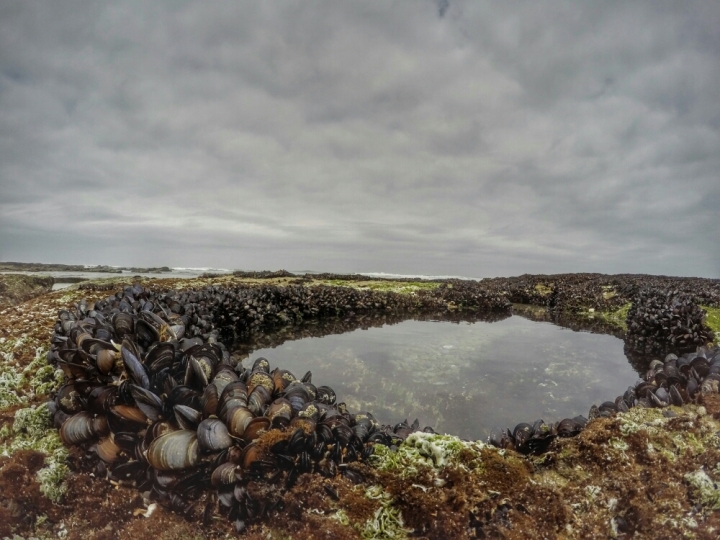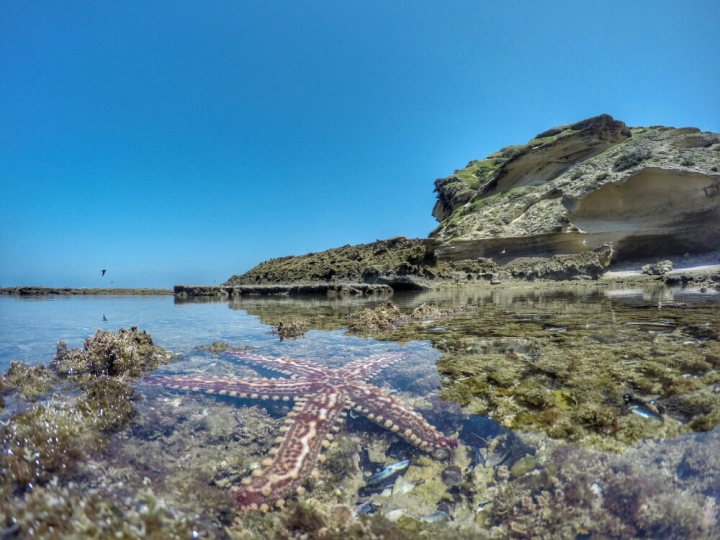The influence of the 2015 /2016 El Nino in the Garden Route has been subtle in comparison to the rest of the country and continent.

Still, a measured walk along the shoreline shows the consequences of higher than normal temperature with incredibly lush Sea Lettuce (Ulva spp) cloaking the intertidal shelf.

The impact of the December red tide, (which had an extended duration) was a massive die off of bivalves, in particular Mussels.

Both the indigenous brown mussel and the exotic Mediterranean mussel succumbed to the toxic effect of the red tide. Interestingly, reversing a two decade encroachment by the Mediterranean mussel, a casual survey would indicate that the indigenous species has rebounded with a better recruitment than the alien usurper.


Another possible impact is a portion of the African Black Oystercatcher population that laid eggs unseasonably late. Normally by mid February chicks have lost their downy feathers with legs and beaks starting to transition from black to the the species distinctive vivid orange red colouration. While it is not unusual to find random late broods, this year there appears to be more than average, a possible indirect impact of the mussel die off.

Another concrete indicator species of unusually high sea temperatures in the Garden Route is the presence of Smith’s Swimming Crabs washing ashore. Normally found in warm tropical currents further north along the Natal coast, when warmer currents wash populations southwards. As they come into contact with colder currents closer inshore they are stunned and wash ashore where they are rapidly eaten by Kelp Gulls.

Ploughshells which normally scavenge on washed up marine animals have also been confused by the die off of a second algal bloom. Once the phytoplankton perishes, it forms foam, a greenish scum, which when washed ashore has a scent that attracts the Ploughshells. Without a real meal from the foam they are left searching in circles leaving their distinctive tracks in sand.

Garden Route Trail offers guided nature walks in the Garden Route. For details of tours visit www.gardenroutetrail.co.za

